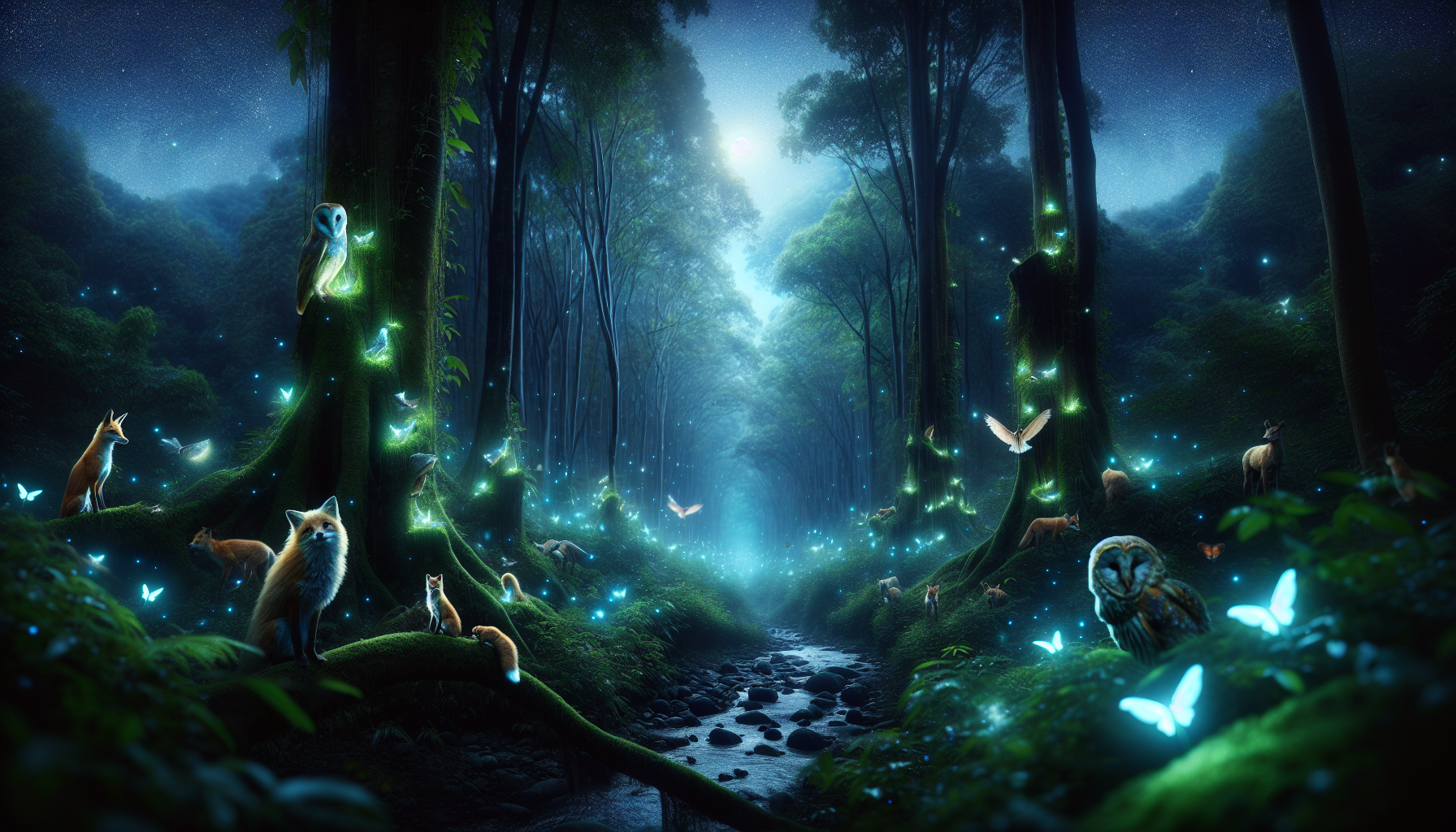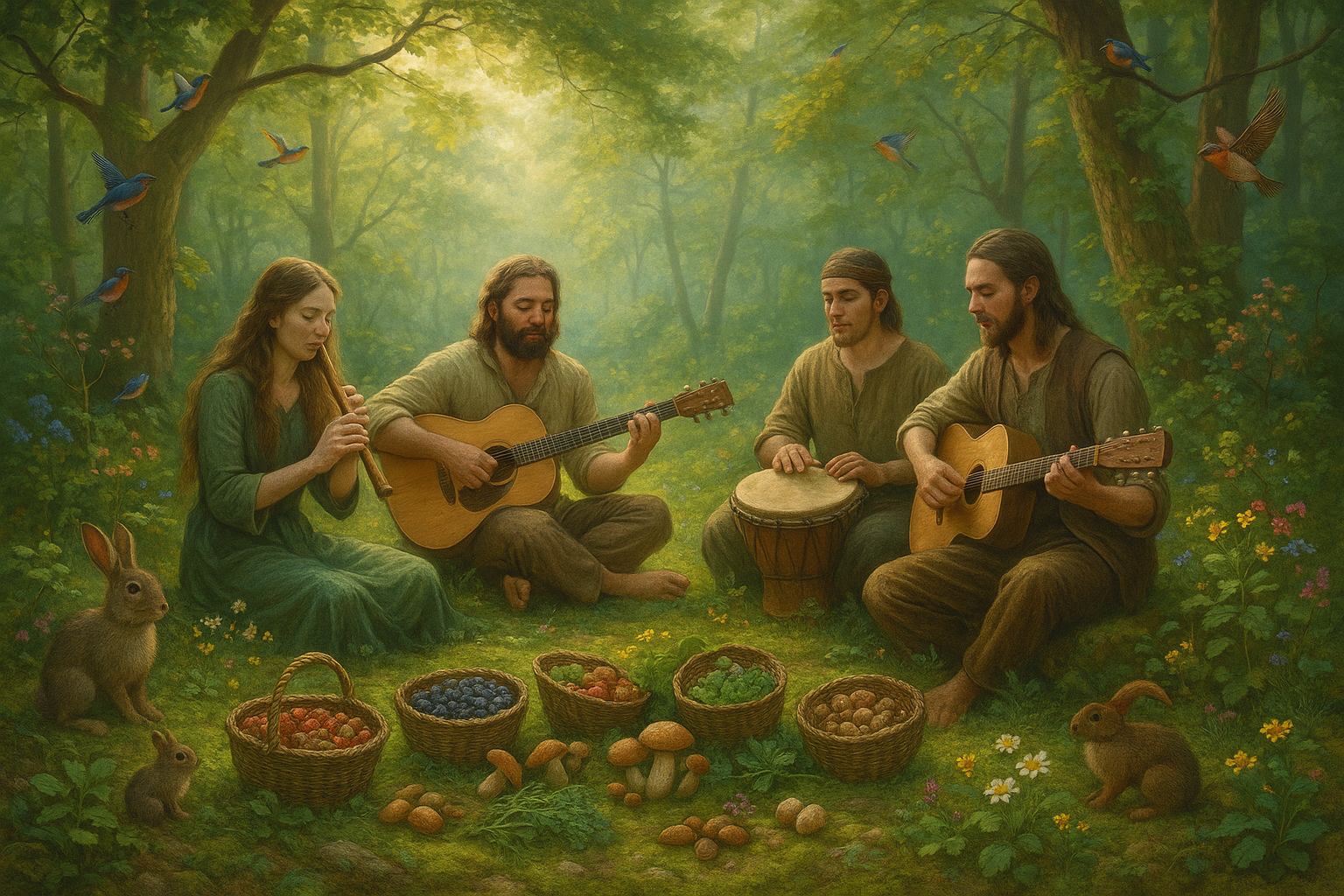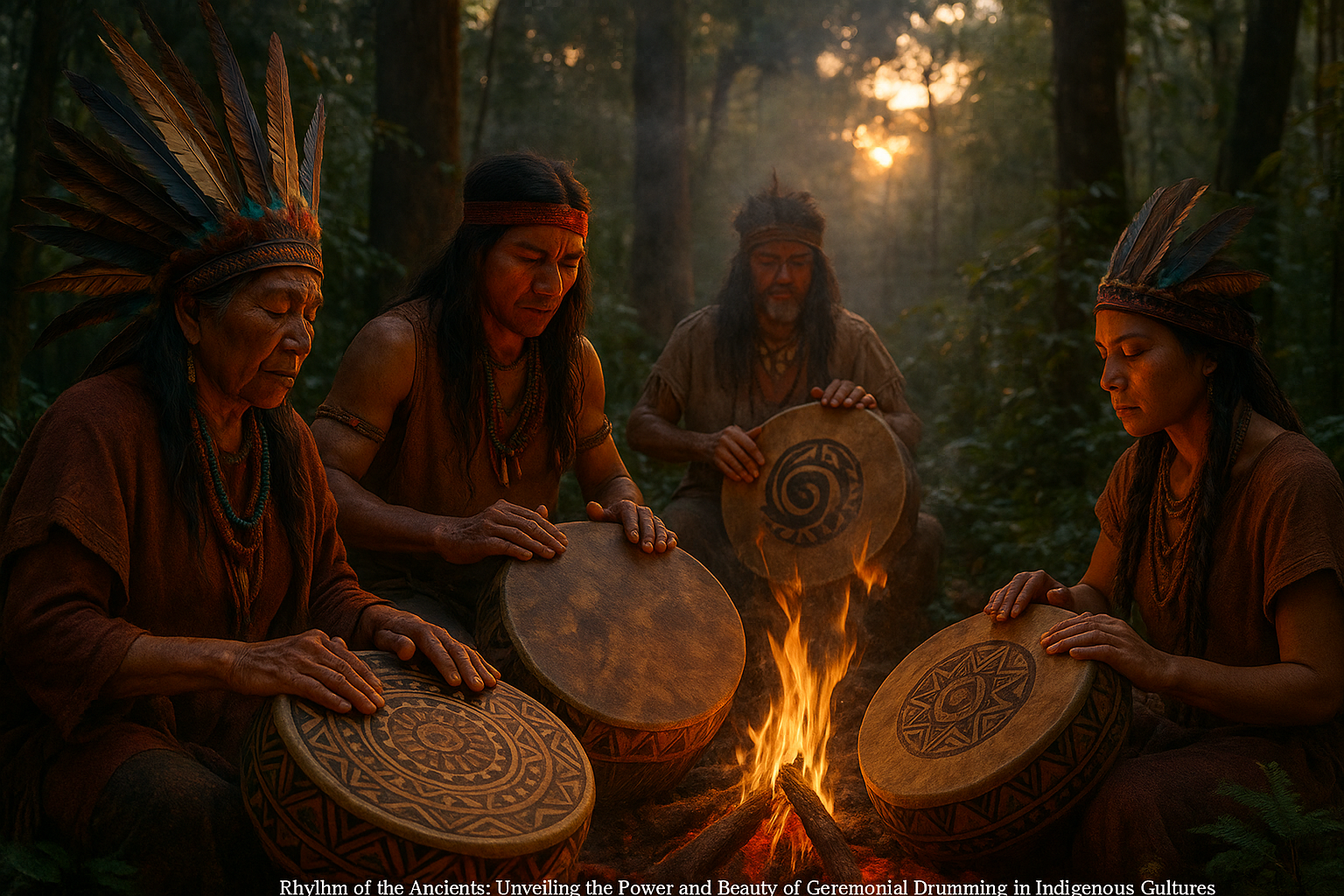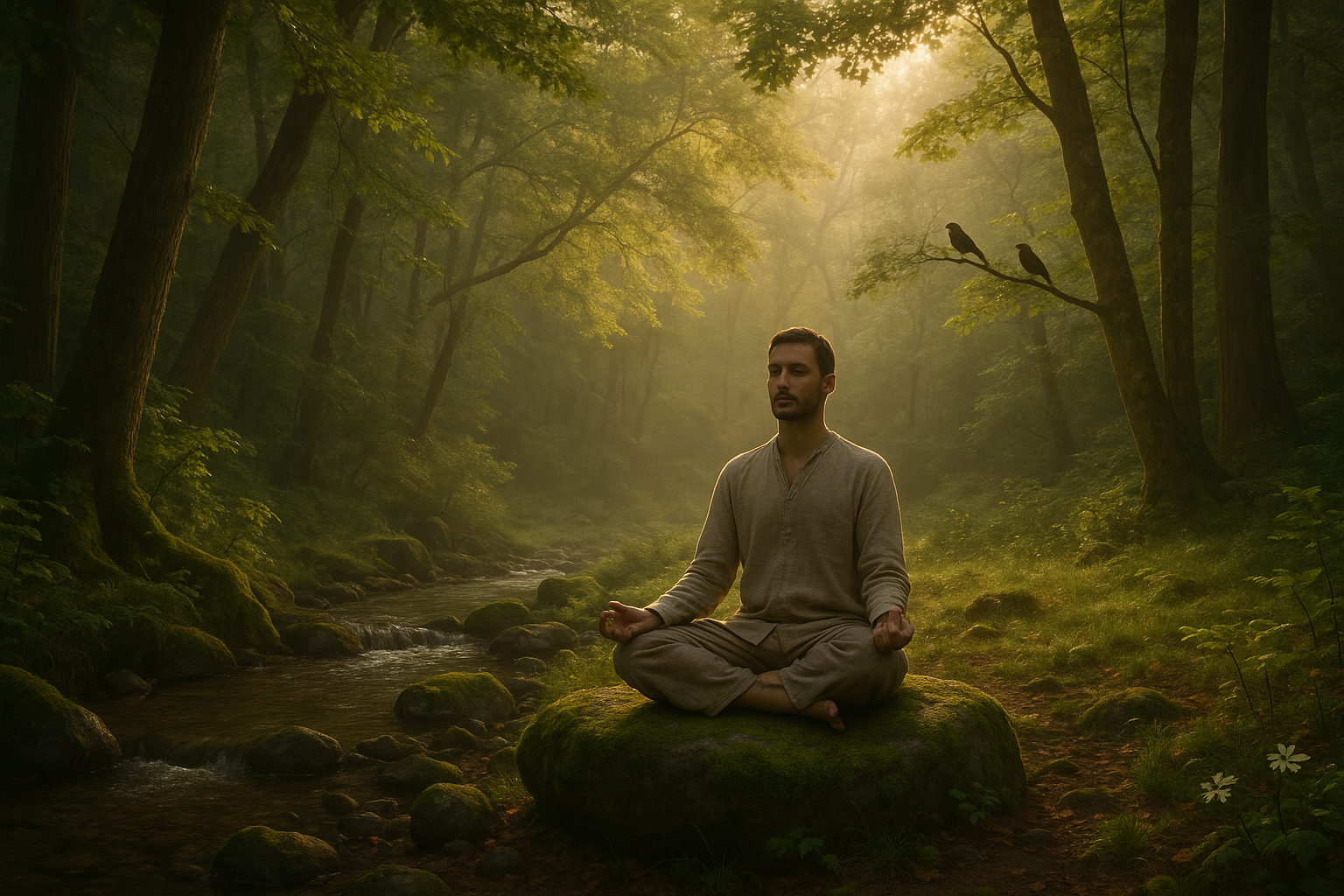As the sun dips below the horizon and the world is cloaked in the velvety embrace of night, a symphony of sounds emerges from the shadows, inviting us into a realm of mystery and wonder. This nocturnal concert, a vibrant and complex soundscape, is what we refer to as biophony—the collective sound that vocalizing animals create in an environment. In our journey through “Unveiling the Mysteries of the Night: The Thrilling Tales of Nighttime Biophony Diaries,” we will delve deep into the enchanting world of these sounds, exploring the hidden lives and stories of the creatures that create them.
Imagine standing in a dense forest, enveloped by the cool, crisp air of the night. The moon casts a silvery glow on the landscape, illuminating the silhouettes of towering trees. As your eyes adjust to the darkness, your ears become attuned to the subtle symphony surrounding you. Crickets chirp rhythmically, their song punctuated by the occasional hoot of an owl. Frogs add their croaky bass notes to the chorus, while distant howls of coyotes echo, creating a melody that is both thrilling and serene. This is the soundtrack of the night, a testament to the vibrancy of life that thrives when the world is asleep.
In this blog, we will uncover the fascinating world of nighttime biophony, exploring the science behind these sounds and the creatures responsible for them. We will delve into how different environments—from dense forests and open savannahs to sprawling deserts and lush wetlands—shape these unique soundscapes. Moreover, we will examine the crucial role that these nocturnal noises play in ecosystems, from aiding in communication and mating rituals to providing essential cues for survival. Each sound is a story, a piece of a larger narrative that paints a vivid picture of life after dark.
Prepare to embark on a journey through time and space, as we also explore the cultural significance of nighttime sounds. From ancient folklore and myths that feature the eerie calls of nocturnal animals to modern scientific studies that decode the mysteries of these sounds, our exploration will offer insights into how humans have perceived and been inspired by the sounds of the night throughout history. 🌌 By the end of our voyage, you will not only have a deeper appreciation for the biophony of the night but also a newfound awareness of the delicate balance and intricate beauty of the natural world. Let us step into the night and uncover the tales waiting to be told. 🌿
Understanding Nighttime Biophony: A Symphony of Sounds
When the sun sets and darkness envelops the earth, a unique and often overlooked symphony begins to play. This is the world of nighttime biophony, a complex soundscape created by a myriad of creatures that come alive in the night. From the chirping of crickets to the distant howls of wolves, these sounds not only add to the ambiance of the night but also play crucial roles in the ecosystems they inhabit. Nighttime biophony is an intricate blend of sounds that reflect the behaviors, interactions, and survival strategies of nocturnal creatures.
The study of biophony—a term coined by Bernie Krause to describe the collective sound vocalizations of non-human organisms in a particular habitat—provides valuable insights into the natural world. At night, this phenomenon becomes even more intriguing as it involves a different set of creatures compared to the daytime. While diurnal animals dominate the soundscape during the day, their nocturnal counterparts take over at night, creating an entirely different auditory experience.
One of the most fascinating aspects of nighttime biophony is the way it varies across different habitats. In a dense forest, the night might be filled with the hooting of owls and the rustling of leaves, while a wetland area may echo with the croaks of frogs and the splashes of nocturnal mammals. Understanding these soundscapes is crucial for conservation efforts, as they can indicate the health of an ecosystem. A vibrant nighttime soundscape often signifies a thriving environment, while a silent night might suggest ecological imbalance.
The Role of Nighttime Sounds in Ecosystems
Nighttime sounds play several vital roles in ecosystems. They are not mere byproducts of nocturnal activities but serve specific purposes for the creatures producing them. For instance, many nocturnal animals use sounds to communicate with each other. Bats, for example, rely on echolocation—a sophisticated system of sound emission and reception—to navigate and hunt in the dark. This ability allows them to detect prey, avoid obstacles, and communicate with other bats, demonstrating the critical role sound plays in their survival.
Similarly, amphibians like frogs and toads use vocalizations as part of their mating rituals. The males often croak loudly to attract females, with each species having its unique call. These calls are not only crucial for reproduction but also help maintain the species’ population in a given area. The complexity and variation in these calls can provide scientists with important information about species distribution and population health.
Moreover, nighttime sounds can serve as warning signals. Certain species use them to deter predators or to signal danger to others of their kind. For instance, some rodents produce ultrasonic sounds to warn others of approaching predators, a behavior that underscores the importance of sound in nighttime survival strategies.
Technological Advances in Studying Nighttime Biophony
The field of studying nighttime biophony has significantly advanced with the development of new technologies. Acoustic monitoring tools and software have revolutionized the way researchers collect and analyze sound data. These technologies allow scientists to capture high-quality audio recordings from various habitats over extended periods, providing a wealth of data for analysis.
One such technology is the use of bioacoustics, which involves the study of sound production and perception in animals. Bioacoustic tools can capture the subtle nuances of nighttime sounds that might be missed by the human ear. These recordings are then analyzed using sophisticated software that can identify and categorize different sounds, providing insights into species diversity and behavior.
Additionally, machine learning and artificial intelligence have become increasingly important in the analysis of nighttime biophony. These technologies can process large volumes of audio data quickly and accurately, identifying patterns and trends that would be difficult for humans to detect. This capability is particularly useful in conservation efforts, where understanding changes in soundscapes can help identify areas that require protection or restoration.
Applications of Nighttime Biophony Research
Research into nighttime biophony has numerous practical applications, particularly in the fields of conservation and ecology. By analyzing the soundscapes of different habitats, scientists can assess the health and biodiversity of ecosystems. Changes in these soundscapes can serve as early warning signs of environmental stress or degradation, prompting timely interventions.
For instance, a decline in frog calls in a wetland area might indicate pollution or habitat loss, allowing conservationists to take action to address these issues. Similarly, the presence of certain predator calls in an area can provide insights into predator-prey dynamics, helping to inform wildlife management strategies.
Moreover, nighttime biophony research can also contribute to our understanding of climate change impacts. As global temperatures rise, many species are shifting their ranges and behaviors, which can be reflected in changes to nighttime soundscapes. By monitoring these changes, scientists can better understand how climate change is affecting ecosystems and develop strategies to mitigate its effects.
Experiencing Nighttime Biophony: A Call to Action
For those interested in experiencing the wonders of nighttime biophony firsthand, there are several ways to get involved. Field trips to natural habitats at night can provide an immersive experience, allowing individuals to hear the symphony of sounds that define these environments. Participating in citizen science projects focused on acoustic monitoring can also be a rewarding way to contribute to scientific research.
Many organizations offer resources and opportunities for the public to learn more about biophony and participate in data collection efforts. By recording and submitting sound data, individuals can help expand the understanding of nighttime soundscapes and contribute to conservation efforts.
For a more structured introduction to the world of nighttime biophony, consider watching the informative video linked below. This video offers a comprehensive overview of the subject, exploring the various sounds that define the nighttime soundscape and the technologies used to study them.
Understanding Nighttime Biophony – National Geographic
Join the Conversation
Engaging with online communities dedicated to bioacoustics and wildlife conservation is another excellent way to deepen your understanding of nighttime biophony. These communities often share the latest research findings, offer insights into ongoing projects, and provide a platform for discussing ideas and sharing experiences.
By joining the conversation, you can connect with like-minded individuals who share a passion for understanding and preserving the natural world. Whether you’re a seasoned researcher or a curious enthusiast, there’s always something new to learn and explore in the fascinating world of nighttime biophony.
| Animal | Sound Produced | Purpose |
|---|---|---|
| Bats | Echolocation clicks | Navigation and hunting |
| Frogs | Croaks | Mating calls |
| Owls | Hoots | Territorial and mating calls |
| Crickets | Chirps | Communication and mating calls |
For further exploration of the captivating world of nighttime biophony, check out the resources available online. From documentaries to interactive sound maps, there’s a wealth of information waiting to be discovered. 🌌

Conclusion
**Conclusion: Embracing the Night: A Journey through Nocturnal Biophony**
As we draw the curtains on our exploration of the nighttime biophony diaries, it becomes evident that the mysteries of the night are not just tales to be told, but symphonies to be heard, felt, and appreciated. Throughout this article, we delved into the captivating world of nocturnal sounds, unraveling the complexities and wonders that nature orchestrates when the sun sets.
**Recap of Key Points:**
We began our journey by understanding the concept of biophony—the collective sound vocalizations of non-human animals in a given habitat—and its pivotal role in ecological balance. The night, often perceived as silent, is in fact a bustling arena of communication and interaction among various species. From the serenades of the nightingale to the haunting calls of the owl, each sound serves a purpose, whether it be mating calls, territory defense, or simply the assertion of presence.
Our exploration took us deep into the roles of specific creatures that dominate the nighttime orchestra. We examined how bats use echolocation, producing ultrasonic waves that are mostly inaudible to the human ear, yet crucial for navigation and hunting in the dark. Similarly, we explored the rhythmic sounds of crickets, whose chirps are more than just background noise; they are vital indicators of temperature and serve as signals within their species.
Furthermore, the article highlighted the technological advancements that have allowed us to study these nocturnal sounds more comprehensively. Tools such as bioacoustic monitoring have become indispensable in conservation efforts, enabling researchers to track species population, health, and biodiversity without invasive methods. The data gathered not only enriches our understanding of these creatures but also aids in crafting effective strategies for habitat preservation.
**The Importance of the Subject:**
The significance of understanding nighttime biophony extends beyond academic curiosity. It is a crucial element in fostering a deeper connection with our environment and recognizing the intrinsic value of biodiversity. As urbanization encroaches upon natural habitats, the symphony of the night faces the threat of being drowned out by human noise pollution. This underlines the urgent need for conservation initiatives and informed policies to protect these natural soundscapes.
Moreover, the study of nocturnal biophony opens avenues for interdisciplinary collaboration, bridging fields such as biology, acoustics, and environmental science. It encourages a holistic approach to conservation, one that appreciates the interconnectedness of all life forms and the subtle yet profound impact they have on one another.
**Call to Action:**
As stewards of the Earth, we hold the responsibility to preserve these enchanting soundscapes for future generations. I encourage you, dear reader, to take action. Whether it is by participating in local conservation programs, advocating for policies that protect natural habitats, or simply being more mindful of your noise footprint, every effort counts. 🌿
Feel inspired to share your thoughts on this topic and engage in discussions that promote awareness and change. Share this article with friends and colleagues to spread the knowledge and appreciation for the mysterious world of nighttime biophony. Who knows, your actions could inspire others to listen more closely and cherish the symphonies of the night.
**Inspiration to Continue the Journey:**
In conclusion, let us embrace the night, not as a realm of darkness, but as a canvas painted with the vivid colors of sound. Let the nocturnal biophony be a reminder of nature’s resilience and creativity. As we continue to unveil the mysteries of the night, may we find inspiration in its tales and motivation to protect its harmonious chorus.
For further reading and to delve deeper into the mesmerizing world of biophony, consider exploring resources like National Geographic and Bioacoustics Research Program at Cornell Lab. These platforms offer a wealth of information and ongoing research that can enrich your understanding and appreciation of our planet’s diverse soundscapes.
Thank you for joining us on this auditory adventure. May the mysteries of the night continue to thrill and inspire you. 🌌
Toni Santos is a sensory storyteller and soundscape artisan whose work explores the forgotten language of the Earth through acoustic ecology storytelling. With a deep reverence for the natural world’s sonic textures, Toni crafts narratives that awaken our ears to the subtle music of forests, winds, waters, and wild silence.
His creative journey is rooted in a desire to preserve and interpret the acoustic heritage of environments, both ancient and fragile. From the echo of birdsong in a disappearing jungle to the resonance of stones in sacred landscapes, Toni’s stories reflect the memory held in sound—often overlooked, yet deeply felt.
With a background in environmental aesthetics and sonic design, Toni blends field recordings, visual symbolism, and poetic insight to create immersive experiences that honor the sonic soul of nature. His work does more than document; it invites listeners to re-tune themselves to the rhythms of life that still pulse beneath modern noise.
As the voice behind Vizovex, Toni shares sound-based studies, ambient narratives, and reflective content that help others reconnect with how sound shapes memory, meaning, and place.
His work is a tribute to:
The lost soundscapes of vanishing ecosystems
The role of natural acoustics in cultural and emotional memory
The healing potential of listening deeply to the world
Whether you’re an artist, an ecologist, or someone drawn to the quiet power of listening, Toni invites you into a space where every rustle, ripple, and resonance becomes a story—one note, one place, one heartbeat at a time.





